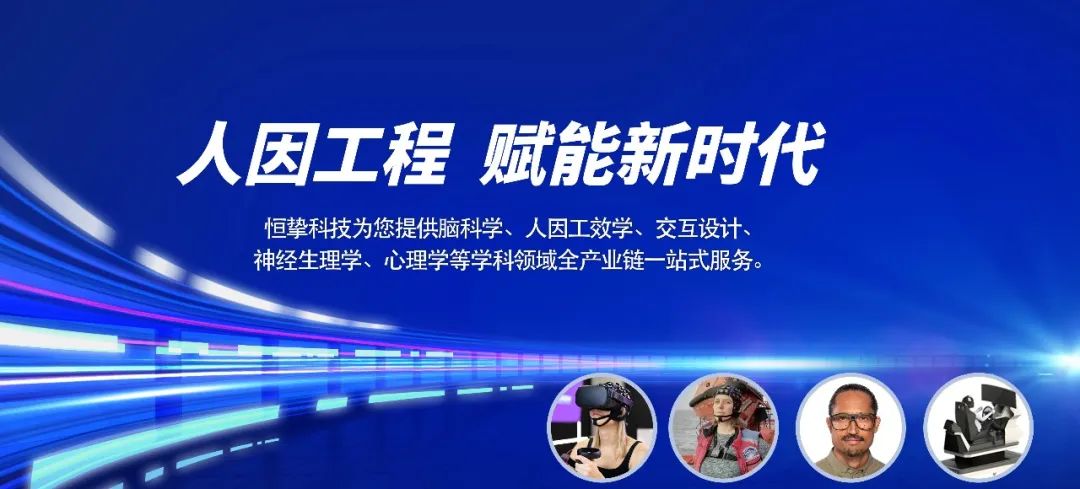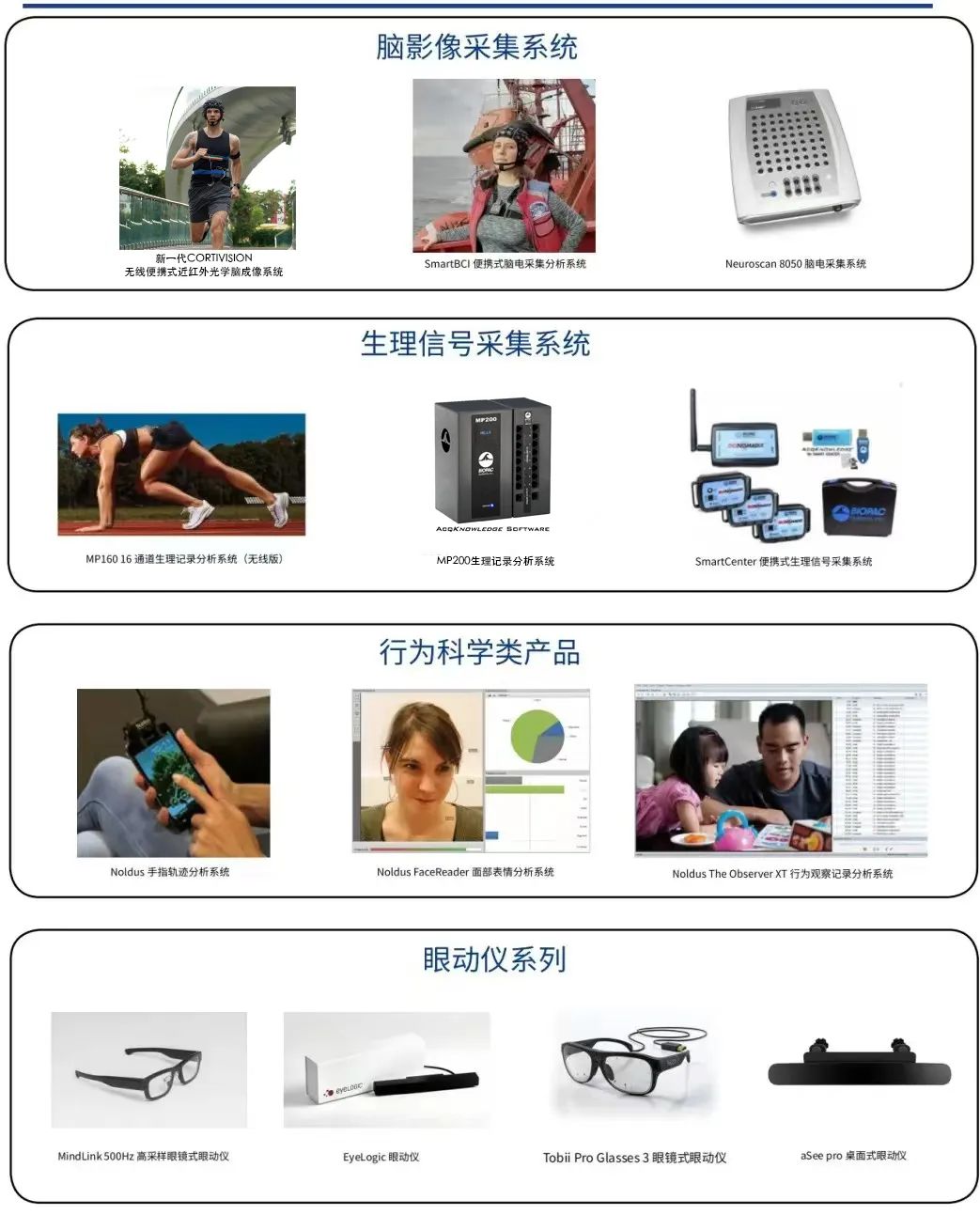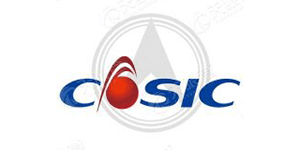













Journal Introduction
















Originally published in Educational Media Studies
Issue 01, 2025














Author














Metaphysical State Ming:He is a professor and doctoral supervisor at the School of Journalism and Communication of Beijing Normal University (BNU), a Distinguished Professor of Changjiang Scholars under the Ministry of Education, and the Director of the Experimental Platform for Communication Innovation and Future Media of BNU.
Wudi:PhD Candidate, School of Journalism and Communication, Beijing Normal University




























Abstract














Cognitive Neurocommunication, as a cross fusion of communication science and cognitive neuroscience, has shown great vitality in theoretical construction and practical application. This paper explores the trends of the field in 2024, focusing on two intertwined research paths: the "centripetal trend" and the "centrifugal trend". The "centripetal trend" emphasizes the instrumental support of cognitive neuroscience for communication research, revealing through empirical methods and physiological measurements how the media affect the human brain and cognitive processes. The "centrifugal trend", on the other hand, expands the boundaries of cognitive communication studies and extends the research perspective to emerging fields such as emotional experience, body turning and artificial intelligence. In this paper, we analyze the characteristics, interrelationships, and challenges of the two trends, and look into the future direction of development.




























byword














Cognitive Neurocommunication Cognitive Neuroscience Artificial Intelligence Trend Analysis














Article




















I. Introduction: the need to include cognition in communication considerations
Before discussing the development trend of cognitive neurocommunication, we need to clarify the meaning of "cognition" in communication. Based on the human-centered media perspective and the rise of generative artificial intelligence, media research is gradually showing the trend of "emotional experience" and "body turn". However, to some extent, these two trends continue the traditional "centrifugal path" of communication studies, which focuses on external influence and decentralization. In order to make communication theory more falsifiable and integrate it into the social science framework, it is necessary to take cognition as the core perspective and introduce empirical research methods such as neurometrics, so as to realize the deep integration of theory and method and promote the scientific process of the discipline.
Specifically, first of all, the mediatization of emotion means that the medium is not only a container for carrying emotion, but also means that the structural characteristics of the medium will affect the generation and expression of emotion. In other words, there is a co-constructive relationship between the media and emotions. Emotions are no longer the experience of the mind outside of the media, but are also the products that are continuously shaped and constructed through the form and structure of the media. Traditional media are confined to linear logic and closed structure narratives, and the audience is trapped in a passive emotional content from the perspective of a "bystander". Nowadays, when technology "empowers emotions", the attributes of the media have shifted from mass media to personal media, and individuals can realize irrational emotional resonance and emotional support through the media on their own initiative. The cognitive function of emotion emphasizes that emotion not only helps to understand the content of the narrative, but also helps to understand the words and behaviors of the characters in the story, and the shaping of the story is accompanied by the comprehensive influence of the reader's cognition, reasoning and emotion. It can be seen that emotion plays an important role in information processing and decision-making.
Second, in communication research, the body changes from silence to significant dependence. The orientation of cognitive communication research has likewise gone through a phase from symbolic cognition, which refers to the symbolic processing stage of cognition, to embodied cognition, which refers to the dependence on the body, and the potential of the body in cognitive communication is tapped. For embodied cognition, the bodily materiality turn is emphasized. The French philosopher Merleau-Ponty has pointed out that "the body is not the object of cognition, but the subject of cognition." This implies that the mind-body relationship is then an integration of mind and body, and that the science of embodied cognition is about understanding the nature of the mind in terms of the body's interaction with the environment.
The development of communication science has always been driven by "cross-cutting" dynamics, which not only include the addition or merging of communication with other contents, but also signify the need to build on the contents of cognitive neuroscience in the development of communication science. At the instrumental level, cognitive measurements have significantly solved the error problem of traditional methods, and can provide insights into the laws of human micro-information processing, making the original research, which was confined to the shelf due to insufficient tools, more scientific and theoretical. Cognitive Neurocommunication, as the communication paradigm closest to human perception, maps out the relationship between human beings and the media, and between human beings and the external environment mediated by the media through the brain as well as other physiological indicators, which were originally in a "black box". At the theoretical level, neural signals' predictions of reality may provide a theoretical perspective on intra-personal, interpersonal and mass communication.
Finally, changes in the media environment have provided field dynamics, and the Internet has become a gathering place for the spread of irrational elements. This is because the network environment has had a tremendous impact on human information processing, decision-making and behavior. These changes not only affect individual-level cognition, but also alter group thought patterns, social cognition, and communication processes.
After exploring the necessity of incorporating cognitive neuroscience into the consideration of communication studies, it can be found that the cross-disciplinary integration shows two trends: one is the "centripetal trend", i.e., cognitive neuroscience provides empirical methodology and tool support for communication studies, which pushes forward the process of the scientificization of the discipline; and the other is the " centrifugal trend", i.e., cognitive communication studies expand the scope of research to a wider range of social behaviors and communication practices. These two trends complement each other and together promote the diversification of communication theory and the depth of practice.






II. The "centripetal trend": the instrumental properties of cognitive neuroscience-enabled communication science
This section will focus on the "centripetal trend", i.e., how cognitive neuroscience can provide communication science with empirical methods and tools to support the scientific progress of the discipline, and how the media can influence the human brain and cognitive processes through quantitative physiological data and experimental methods. The empowered role of cognitive neuroscience in communication science will be discussed at the practical and theoretical levels, and its contributions to the effectiveness of communication strategies, theoretical frameworks and cognitive models will be explored.
(i) The practical dimension: cognitive neuroscience provides empirical support for the effectiveness of communication strategies.
In 2024, the instrumental properties of cognitive neurocommunication science are widely recognized and no innovative statistical methods or hardware breakthroughs have emerged. The longstanding intersection of cognitive neuroscience and communication science has provided communication science with a number of relatively novel measurement tools and technological approaches, such as multi-conductor physiological techniques, functional magnetic resonance (fMRI), electroencephalography (EEG), and eye-tracking.
The two main origins of cognitive neuroscience are Cognitive Science and Neuroscience. The former draws on the information processing model in the computer field to explore the "processing" of external stimuli in the human brain, while the latter explores the traceability and connection of human intuition and behavior in the brain, trying to draw a "brain map". The former explores the process of "information processing" in the human brain for external stimuli, while the latter explores the traceability and connection of human intuition and behavior in the brain, and tries to draw a "brain map". Therefore, through the introduction of cognitive neuroscience techniques, communication studies are able to explore the effects of content generation, information dissemination, and user feedback on individual cognition and emotion, and with the quantitative analysis of individual neurophysiological indicators, communication studies are able to achieve a higher degree of accuracy and verifiability. HR) and EEG belong to mediated cognitive processing, while electrodermal (EDA) and facial electromyography (fEMG) belong to mediated emotional processing. It is worth noting that EEG signals have high temporal resolution but their spatial resolution is low; in contrast, functional MRI provides higher spatial resolution.16 With the combination of these two techniques, the measurement of cognitive processes breaks through the constraints of time and space, allowing communication to be studied at a more comprehensive level.
The "S-R" (stimulus-response) model has failed to adequately take into account human subjectivity during the period of mass communication effects research. Cognitive Neurocommunication Science's focus on the interaction process and the use of natural paradigms remedies this deficiency and provides important tools and methodological support for studying the relationship between physiological signals and communication behavior. Through the support of this interdisciplinary approach, researchers are able to reveal the mechanisms by which different communication strategies affect communication effects and provide empirical evidence for optimizing communication strategies. For example, one study explored the effects of different persuasion strategies (emotional vs. rational) on attention and information processing under the framework of the refined likelihood model, and found that there is a significant difference in the allocation of cognitive resources between central and peripheral persuasion strategies. In addition, research in the field of health communication has also received an important boost. Tian et al. found that "person-centered" communication strategies can promote psychological recovery when young people talk about emotional topics such as the death of their parents, which emphasizes the importance of supportive conversations for physical, mental, and emotional well-being, through the measurement of heart rate variability. In the area of personalized communication strategies, event-related potential (ERP) techniques were used to explore the effects of personality traits on attitudinal consistency. It was found that personalized communication strategies do not necessarily enhance communication effectiveness, which provides new insights into communication strategies in public health areas such as vaccine promotion. In the field of children's mental health, empathetic robot dialog strategies have been shown to enhance children's trust and motivate them to be more willing to share their secrets and emotions, a finding that provides an important reference for the development of children's interaction patterns with machines. In the field of marketing communications, the combination of eye-tracking technology and galvanic skin response has been used to study the communication effects of brand implants. A study found that the combination of visual information and brand melodies can effectively improve viewers' memory and attention to the brand, which provides empirical evidence for the optimization of brand communication strategies. These studies not only enrich the theoretical system of cognitive neurocommunication, but also provide new ideas for the optimization and innovation of communication in practical applications.
(ii) Theoretical level: innovation and development of seven theoretical frameworks and cognitive models
2024 The importance of theoretical research in the field of cognitive neurocommunication has become increasingly evident, with the study by Potter et al. marking a major milestone in the discipline. They conducted a systematic review of communication papers using physiological measures between 1980 and 2020 and summarized seven key theories, including Desensitization Theory, SelectiveExposureTheory, GeneralAggressionModel (GAM), ExcitationTransferTheory ( ExcitationTransferTheory (ETT), AbsorptionTheory (Presence, Immersion, and Narrative Involvement), Limited Cognitive Capacity Theory (LC4MP), and theories on virulence and information validity. These theories have been more deeply validated and expanded with the support of cognitive neuroscience.
A common feature of these theories is the combination of physiological measurements with theoretical studies; for example, desensitization theory refers to the idea that repeated exposure to certain types of media content leads to diminished psychological responses. One study based on desensitization theory confirmed that frequent exposure to hate speech leads to desensitization of listeners, as evidenced by a slowing of the heart rate, suggesting that prolonged exposure to hate speech may alter physiological responses to negative speech. Selective exposure is typically characterized by a tendency for individuals to be actively exposed to information that is consistent with their subsequent attitudes. Potter et al. suggest that physiological data such as heart rate, electrooculography, and eye movements may allow for a deeper exploration of the intrinsic motivation for selective exposure, and reveal the complex mechanisms by which emotional and physiological responses play a role in the selection of information. Related studies have further validated and extended the concepts of selective exposure and confirmation bias through electroencephalography (EEG). For example, when subjects watched videos consistent with their own political leanings, brain waves showed that the brain was in a more relaxed state; whereas when confronted with information inconsistent with their personal views, brain activity increased significantly to process conflicting information.
The General Aggression Model (GAM), on the other hand, is a comprehensive framework used to explain how aggressive behavior is influenced by individual, situational, and mediated violence. A number of studies have used physiological-psychological measures based on the GAM framework to observe the effects of violent content on individuals.Veneziani et al. found, through the use of an overscanning paradigm, that playing a violent video game was followed by an elevated degree of inter-brain synchronization (IBS) between players, which may be associated with higher levels of social attention, sense of control, and dominance. Arousal transfer theory, on the other hand, reveals the possibility of a mismatch between physiological measures and self-reported outcomes. zhang et al. explored the arousal transfer effect when switching between immersive and non-immersive media and found that the physiological arousal effects of the initial immersive experience were transferred to the subsequent non-immersive experience. potter et al. thus suggested the use of multi-method integration to accurately capture the complex process of transmission.
Potter argues that in the field of communication, the three concepts of Flow, Presence, and Narrative Engagement are used to describe user immersion and engagement in media phenomena, and summarizes them as Absorption Theory. The theory has been validated in virtual reality communication, for example, by measuring physiological data to show that virtual reality devices are more likely to induce a state of mindfulness flow during positive thinking training than tablet devices.
The seven theoretical frameworks also include the Finite Capacity Theory of Motivationally Mediated Information Processing (FCMIP), which is an important version of cognitive modeling used to understand or predict human mental and behavioral processes in perception, memory, thinking, decision-making, and so on. As representatives of cognitive models, Elaboration Likelihood Model (ELM) and Dynamic Human Centered Communication Systems Theory (DHCCST) have expanded the limited capacity theory and provided an important platform for the study of cognitive models. Capacity Theory (DHCCST) has expanded the limited capacity theory and provided important theoretical support and empirical evidence for the research of cognitive modeling. For example, the exhaustive likelihood model refers to how individuals choose different processing methods in the information processing process according to the limitations of motivation and cognitive resources, and a study based on the EEG technology has found that there is a significant difference in the allocation of cognitive resources between central and peripheral persuasion strategies. In addition to the traditional cognitive model, Yin et al. proposed the Embodied Schema Information Processing Theory (ESIPT), which emphasizes the importance of the body for communication and believes that the activation of body schema is an automatic process that can generate cognitive awareness. This model emphasizes the importance of the body in communication, arguing that the activation of body schemas is an automatic process that generates cognitive potentials, such as changes in mood and allocation of attention, which can influence subsequent higher-order cognitive processes.The ESIPT model and the DHCCST model share commonalities in that they are both frameworks for understanding the role of the body in cognition and communication, and that they can complement each other in explaining the dynamics and interactivity of communication systems.
Finally, neurocognitive mechanisms of information sharing (e.g., retweeting behaviors) and information validity is a major area represented by cognitive neurocommunication, which explores the prediction of group retweeting phenomena by individuals' neural responses. The team at the University of Pennsylvania and Scholz et al. proposed a value-based framework for viral communication, arguing that information sharing is a value-based decision based on expectations of self and social outcomes, and that self-relevant, socially relevant and value-system brain regions can significantly predict retweets with a degree of accuracy that exceeds self-reported willingness to retweet. Brain-based predictive models were able to more reliably predict the spread of information across populations, demonstrating the generalizability of communication domains across different levels of self, social, and value-related neural signaling, and the study was replicated in cross-cultural contexts. The team's work on Brain-Based Prediction of Message Effectiveness has now been extended from health communication to climate change risk communication. In summary, the formation and expansion of these theoretical frameworks not only marks the deepening of the theoretical system of cognitive neurocommunication, but also provides multi-dimensional theoretical support and practical guidance for the development of the discipline of communication.






III. "Centrifugal trends": from cognitive neuro-communication to cognitive communication
Cognitive communication science points out that human bodily experience is a prerequisite for knowing the world, and highlights the characteristics of cognitive processing of mental subjectivity, emphasizing the key role of intersubjectivity in the communication process. This is an emerging communication research approach developed under the vision of second-generation cognitive science. At present, two major schools of theoretical cognitive communication and cognitive neuro-communication have been formed in China, presenting multidisciplinary, cross-cutting and composite academic characteristics. Some scholars believe that media cognition research reveals the relationship between spatio-temporal communities, information flow and technological development, and promotes in-depth integration and efficient operation through the optimization of communication strategies and the enhancement of information literacy. Here, we use "centrifugal" as a metaphor to indicate that in the process of extending the boundaries of communication studies and expanding the discipline, its theories and methods are constantly radiating outward, and its exploration and corroboration with cognitive neuroscience promote the in-depth exploration of cognitive neural communication studies.
(i) Boundary expansion: the shift from physiological mechanisms to communication practices
Cognitive Neurocommunication Studies (CNS) focuses on how media affects individuals' attention, emotion and memory through neural mechanisms. The convergence of cognitive neurocommunication and cognitive communication reflects a parallel trend in the field of research from "micro-physiological mechanisms" to the broader "practice of communication". Both disciplines have benefited from this convergence, with communication science filling a theoretical gap in cognitive neuroscience, and the latter bringing an empirical physiological foundation to communication science. In 2024, cognitive communication's exploration of communication practices will focus on emotion, body and behavior.
Cognitive communication broadens the outreach of cognitive neurocommunication, expanding from the single study of cognitive processing in the brain to the influence of emotion and physical experience on the communication process. The characteristics of emotion-driven information dissemination indicate that emotion plays a key role in information attraction, memory effect and diffusion speed, and this emotion-driven mechanism has an amplifying effect on the dissemination of media information. At the theoretical level, some scholars have proposed that short videos can build value sharing in the context of globalization through the "integration of emotion and reason", emotional triggering and empathy, interaction and identification, immersion experience and emotional belonging. Other scholars have emphasized the importance of emotional communication and the construction of cross-cultural emotional communities in order to overcome digital divide, promote reciprocity and cope with cultural risks. Empirically, some studies have examined how persuasive factors can be utilized to awaken group empathy in the context of the US-China game by examining cognitive-emotional-structural factors.
Merleau-Ponty has suggested that "the body is the site of lived experience and the site of enactive expression of intentions" . Physical experience is gradually seen as an important factor influencing cognitive effects, and the number of studies on media environment as a variable has gradually risen due to the expansion of media environments by virtual reality and big models. In scenarios such as immersive communication and virtual reality, the sense of physical immersion and interaction directly affects the audience's emotional resonance and message acceptance. Some studies have quantitatively explored the mediating role of embodied cognition and mindstream experience in the relationship between interaction, acceptance and rural cultural identity of VR technology, and the results show that VR interaction and emotional experience can enhance users' cultural identity, satisfaction and willingness to socialize and share. The problem of "body" also exists in human-computer communication. Deng Jianguo proposes that the development of AI presents two routes: "AI with out-body communication" and "AI with body communication", and points out that Deng proposed that the development of AI presents two routes: "AI with out-body communication" and "AI with in-body communication", and pointed out that the two present a spiral mutual promotion relationship.
Cognitive communication studies responses to behavior, and cognitive load is one of the central topics. As a multidimensional theoretical concept, cognitive load involves the influence of individual emotions, information characteristics, media carriers and other factors, as well as how individuals respond to cognitive load and information overload in different behavioral ways. From the media embodiment that gives people the right to be "permanently online" to the "digital detoxification" of information fatigue, more and more people are stepping into the post-connectionist environment of "digital disconnection". Some scholars believe that "disconnection" refers to disconnecting from smart media or disconnecting from the Internet, and that disconnection is a form of stress in the face of privacy anxiety, which is not a pessimistic behavior, but rather a user's empowerment of the self. However, at the empirical level, disconnection has no positive or negative impact on individual subjective well-being. If disconnection is a behavioral way to face information overload, then "digital hoarding" is a means of coping with the anxiety of missing out. The contradiction between the infinity of digital information and the finiteness of users' cognition is the key contradiction that constitutes digital hoarding, which is due to the intertwining of information qualities and individual psychology. Zhu Lili et al. redefine digital hoarding behavior from the perspective of communication science, that is, the universal digital hoarding behavior of the youth group is a kind of negative performanceist practice of formal compliance and action laziness, which reflects the inherent contradictions in the emotions and behaviors of the youth group. In summary, whether "disconnection" or "hoarding", these two behaviors reveal the cognitive challenges faced by individuals in the current communication environment. In this context, how to effectively manage and regulate cognitive load is not only an important ability for individuals to adapt to the information society, but also provides a rich perspective and practical inspiration for communication research.
(ii) Technological expansion: extension of the cognitive domain of individuals assisted by artificial intelligence
At the present time of intelligent technology empowerment, the media has become a tool for extending cognition and fully empowering individuals. The core concept of cognitive communication is that communication does not exist outside the body. With the continuous development of artificial intelligence and communication technology, intelligent tools, intelligent media and intelligent environment have appeared one after another, which play a key role in the selection and processing of information, independent thinking and judgment, and meaning output. Some scholars regard cognitive communication under the trend of extracorporeal extension of the mind as "extended cognitive communication", and believe that the emergence of AI news bodies has become an important part of the cognitive domain, extending the cognitive ability of human beings. Artificial intelligence in cognitive extension is mainly realized in two ways: first, as a cognitive extension tool that needs to rely on human decision-making, such as AI-assisted writing, which can be regarded as internal augmentation; second, through the provision of smarter external support, such as automated driving, which empowers human behaviors but does not directly enhance cognitive ability, which can be regarded as external augmentation. The role of extended cognitive tools still relies on individual initiative.
The knowledge capacity available to human beings during information processing is called "cognitive bandwidth". By summarizing past research, we find that generative artificial intelligence (AIGC) can be used to further extend cognitive bandwidth, and describe the stage-by-stage path of cognitive extension by AIGC based on the perspective of distributed cognition. Although cognitive bandwidth has "limited availability", it still has the three positive characteristics of adjustability, gainability, and expandability, therefore, in the generative environment, cognitive bandwidth will gain more possibilities from resources, capabilities, and space. For example, from the understanding of "media interface", the dialog agent of the big model in the era of intelligent communication transcends the previous linear logic, which is a breakthrough of the cognitive boundary, and the multimodal output of generative artificial intelligence will empower new knowledge beyond individual cognition.
While technology empowers individuals, it also raises issues of cognitive risk, cognitive ambivalence, and cognitive bias. Cognitive literacy development has been repeatedly emphasized as an important path to address these issues. Research has shown that large models are more likely to produce "cognitive illusions" when there are obscure, controversial, or data-limited topics, despite the assumption that they perform well on more common cues on which there is a general consensus. Such illusions may lead to cognitive crises and human-computer communication risks for users, including problems of erroneous knowledge reception, tacit knowledge masking, and stereotyped thinking. In addition, some studies have also found that large language models replicate cognitive biases in human reasoning, and in some cases show irrational thinking similar to that of humans, which may also lead to cognitive contradictions in the shaping of human-computer relationships. For example, some intelligent products are still regarded as "low-development life community", and their role position has triggered the reflection on human-machine relationship in communication studies. In the face of the diverse cognitive problems derived from AI technology, some scholars have proposed that the construction of cognitive literacy has become a key path to solve the problem. Xie Qiaoying et al. emphasized that in the face of online cognitive warfare, the cultivation of cognitive immunity relies on the synergistic effect of media literacy education and rumor-dispelling mechanism. Nowadays, media literacy needs to be upgraded to reconstruct rational cognition from the level of the nature of technology and the relationship between human and technology. Cognitive literacy, such as cognitive recognition, cognitive critique, cognitive safety and cognitive adaptation, should be cultivated from a human-machine collaborative mindset.
In summary, the intelligence of machines provides a double opportunity to enhance and intervene in individual human cognition, while generative AI provides both technical support for the expansion of human cognitive abilities and new challenges and directions for future research in the field of cognitive communication.
(iii) Expanding Issues: Complexity of Social Cognitive Issues in the Era of Intelligent Communication
In the above overview, the target of cognition is often the individual, but the perturbation of society by cognitive interventions and transmutations cannot be ignored. In the era of intelligent communication, the whole society faces multiple uncertainties such as geographic, economic, and technological risks, and these uncertainties imply the advent of the "ukulele era" with flow instability, uncertainty (Uncertainty), complexity, and ambiguity. The advent of the "Age of Uca". Against the backdrop of increasing social complexity, the scope of cognitive communication has gradually expanded to cover a wider range of social issues, including cognitive competition, cognitive literacy, cognitive inequality, and risk perception, which has led to a series of macro-social and structural challenges.
At the macro level, "cognitive warfare", "cognitive war" and "cognitive competition" are still frequently mentioned. The so-called cognitive warfare is to "treat human thoughts as a battlefield", which aims not only to change people's thoughts, but also to transform the way they think and act. Cognitive warfare relies on brain science, which is driven by technological advances, algorithm-driven business models, and brain science. Cognitive warfare is highly destructive and can undermine democracies, subvert regimes and pose a threat to social stability. In terms of time horizon, cognitive warfare pursues either short-term effects or long-term strategies. In the future, the inherent posture of cognitive warfare will be a long-term evolutionary process, emphasizing more on invisible cognitive influence and long-term cognitive shaping. In terms of the mechanism of effectuation, some studies, based on cognitive science theories, propose that cognitive warfare mainly operates through the basic principles of strengthening cognitive competition, inducing cognitive pressure, and utilizing cognitive bias. Xu Minghua and others have proposed three levels of "weaponization" of international public opinion through the theory of rooting: symbolic violence in the dimension of social perception, ideological domination in the dimension of social judgment, and consciousness confinement in the dimension of social interpretation. Research on cognitive warfare has identified technology as the driving force behind its origins. However, the academic community is divided on the role of AI in cognitive warfare. Some studies have argued that AI can empower cognitive warfare in terms of accuracy and efficiency; however, some studies have demonstrated through empirical research that AI cognitive warfare exploits human cognitive weaknesses and thinking biases, subconsciously implements thinking induction and cognitive manipulation, and poses a significant threat to national security in the cognitive domain. From a comprehensive point of view, research on cognitive warfare and cognitive competition has been carried out along the lines of the origin of the problem, conceptual evolution, situational analysis, causative mechanisms, and coping strategies.
At the structural level, digital inequality in the face of smart machines has become a new research topic. Our team's research points out that the phenomenon of "inequality" on the Internet still exists, but it has changed in its manifestation, specifically from "hard barriers" such as unequal motivation and access to "soft barriers" such as inadequate explanations, unequal understanding, and unequal trust. The "soft barriers" of unequal explanation, unequal understanding and unequal trust. Therefore, it is important to note that inequality occurs both at the macro level of the social structure and at the level of the individual's cognitive structure. The concept of the "cognitive gap" can be a new dimension in the study of digital inequality, reflecting differences in cognitive abilities due to differences in media technology and usage, and is a manifestation of inequality in smart societies.72 However, there is still a need to bridge the "cognitive gap" in the future, as well as the "soft barrier" of inequality in understanding and trust. However, in the future, there is still a need to remedy the problem of measuring the "cognitive gap", whether it is based on classical measurement theory or the search for appropriate behavioral or neurological response indicators, and to consider how to address the harmonization of individual and societal measurement effects.






IV. Conclusion
In 2024, cognitive neurocommunication will show a two-way development of "centripetal" and "centrifugal" trends. On the "centripetal" side, research in the discipline is advancing in depth, reflecting the refinement and specialization of theories and cognitive neurotechnologies in exploring the intrinsic mechanisms of cognitive communication, while on the "centrifugal" side, interdisciplinary collaborations are expanding the scope of cognitive neurocommunication research, applying it to political communication, health communication, and cognitive neuron communication. In the "centrifugal trend", interdisciplinary collaboration has expanded the scope of cognitive neurocommunication research, applying it to the fields of political communication, health communication, and intelligent communication. This two-way evolution not only reflects the depth and breadth of research in the discipline, but also foretells the challenges and opportunities in theoretical innovation and technological application in the future.
Marcuse advocated that both societal and individual thinking should contain both affirmative and critical dimensions. Based on this idea, while affirming that AI embeds communication and empowers individual cognition and capabilities, we must also maintain critical thinking about its impact. This critique should not only focus on the transparency, interpretability, and fairness of AI technologies, but also promote the construction of AI systems that are consistent with human values and ensure the long-term benefits of the technologies. At the same time, the protection of individuals' "neurological rights" will become an important issue, which requires not only that technology be developed in a way that respects privacy and data security and avoids potential interference with individuals' thinking and beliefs, but also that the application of the technology be regulated in terms of policy, ethical and legal frameworks.
In the future, cognitive literacy will be a key strategy for coping with the cognitive challenges posed by AI. In complex media environments, individuals need to be able to assess the value of information, discern the truth from falsehood, and think critically to cope with the potential cognitive burdens and risks that AI technologies are likely to bring. Cognitive neurocommunication research will play an important role in this process, providing scientific evidence and practical guidance to enhance the cognitive adaptability of individuals and the media literacy of society.














If there is any infringement, please contact us for removal!
Company Profile



Ltd. is an innovative high-tech enterprise focusing on cutting-edge technology, specializing in brain science, neural management, human factors engineering, biomechanics, anthropomorphic environments and XR simulation reality and other multidisciplinary cross-cutting fields. The company is invested by Zhongke (Guangdong) Science Group, relying on the scientific research strength of Guangdong Human Factors Technology Research Institute and Wuhan Human Factors Engineering Technology Research Institute, and has constructed a professional operation system integrating research and development, production, sales and technical service to provide customers with one-stop, high-quality scientific and technological solutions.
With excellent innovation ability, Hengbest Technology has been awarded many invention patents, software copyrights and registered trademarks, selected in many authoritative lists such as National High-tech Enterprises, and participated in the compilation of national standards and group standards. The company has been serving universities and research institutes for a long time, and has cooperated deeply with many national societies such as the Chinese Society of Ergonomics, the Chinese Psychological Society, the Architectural Society of China, etc. The company organizes and participates in more than 40 academic conferences every year to promote technical exchanges and the development of the industry.
With the concept of "Technology Empowerment, Innovation Drive", Hengzhi Technology is committed to become a leading technology enterprise in the industry, to help national scientific and technological progress and social development, and to work together with partners from all walks of life to achieve a better future of technological empowerment.












































